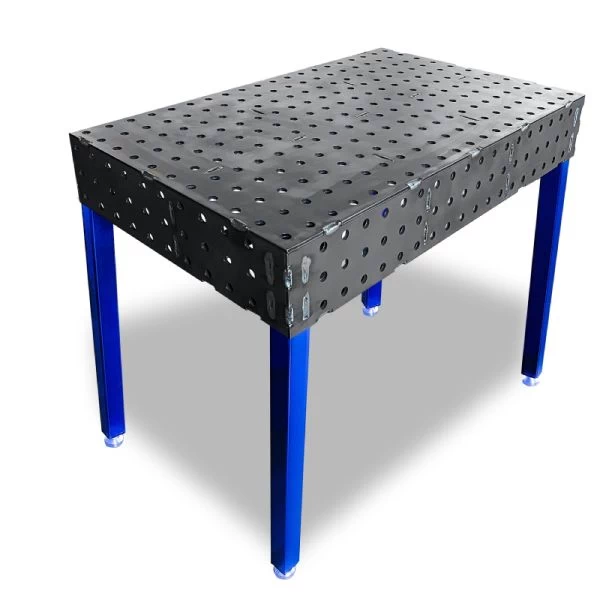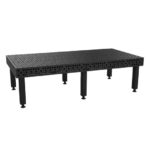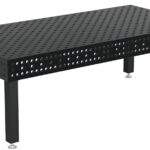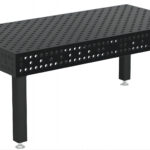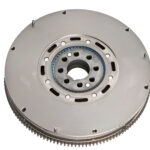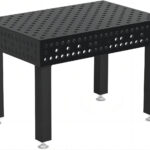Welding tables are indispensable in both amateur and professional metalworking settings, providing a sturdy and heat-resistant surface for various welding tasks. The material and design of a welding table significantly impact its functionality, durability, and safety. This article explores key considerations and options available when choosing a steel welding table, emphasizing the best materials and designs suited for different welding projects.
Materials Used in Steel Welding Tables
The choice of steel for a welding table affects its surface durability, heat resistance, and overall longevity. Common materials include:
- Steel Plate for Welding Tables: A 5/8 steel plate is often used for welding tables due to its thickness and ability to withstand high temperatures without warping. This makes it ideal for heavy-duty welding jobs where heat intensity is significant.
- Perforated Steel Plate: For applications requiring enhanced ventilation and clamping capabilities, perforated steel plates are preferred. They offer flexibility for securing workpieces and allow welding debris to fall away from the work surface.
- Best Steel for Welding Table Tops: For top surfaces, materials like A36 structural steel are frequently chosen for their blend of durability and cost-effectiveness. This type of steel provides a smooth, flat surface that resists sticking and can be cleaned easily.
Design Features of Steel Welding Tables
Design elements can greatly enhance the functionality of welding tables:
- Adjustable Steel Welding Table: Features like adjustable legs or tilting tops allow for ergonomic positioning, reducing fatigue and increasing precision in welding tasks.
- Mobile Welded Steel Tables: Equipped with casters, these tables are easily movable around the workshop, making them ideal for dynamic work environments where flexibility is crucial.
- I Beam and Flat Bar Designs: I beam structures offer robust support and are typically used in heavy-duty tables. Flat bar tables, on the other hand, are suited for lighter projects and provide ample resistance to heat and wear.
Practical Applications and Scenarios
A well-chosen welding table can significantly improve the efficiency and safety of welding operations. Here are a few scenarios where the right table makes a difference:
- Automotive Workshops: Using a steel welding table with a robust 5/8 inch top ensures that heavy automotive parts can be welded without the risk of damaging the table.
- Fabrication Industries: For businesses involved in manufacturing or large-scale metal fabrication, an adjustable or mobile steel welding table can facilitate the handling of diverse projects with ease.
- Artistic Metalworking: Artists working with metal prefer tables with versatile surfaces like perforated steel that accommodate creative needs and complex welding tasks.
Why Choose Our Steel Welding Tables?
At [kt-foundry], we specialize in designing and manufacturing high-quality steel welding tables tailored to meet the diverse needs of welders. Our tables are crafted from the finest materials and incorporate innovative designs to enhance your welding efficiency and safety. Visit our website to explore our range of products and find the perfect welding table for your needs.
Choosing the right steel welding table involves understanding the specific requirements of your welding tasks and selecting a table that offers the best combination of material quality and design features. Whether you need a heavy-duty table for industrial applications or a versatile setup for creative projects, the right table can significantly enhance your welding success.

